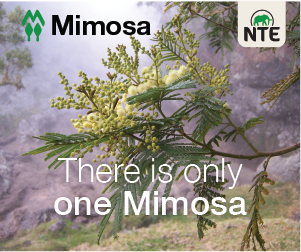A startling revelation

New statistics show that the carbon footprint of wasted hides is much higher than previously thought; tanners’ work on the rest saves millions of tonnes of emissions per year.
Choosing not to turn hides into leather has a much more serious impact on the environment than previous estimates suggested. New analysis by the Leather and Hide Council of America (LHCA) indicates a serious under-calculation of the emissions that accrue if the material goes to waste.
Figures from the United Nations Food and Agriculture Organisation (FAO) for live cattle in 2022 give a global total of just over 1.5 billion head. It presents this overall number as an estimate. Within that, it describes its figures for important cattle-rearing countries, including India and Ethiopia, as “imputed values”. This usually means data for those countries was hard to come by and the FAO has used numbers that it believes are plausible and coherent to put down a value for those countries.
From this global cattle herd, LHCA senior vice-president, Kevin Latner, thinks 334 million hides could, in theory, be available to tanners every year. He acknowledges that this is higher than the figure the FAO offers; the organisation’s latest calculation is 308 million for the year 2022. This includes no contribution to the total from India, for example; Mr Latner’s adjusted figures reflect information he has received from industry contacts in that part of the world.
Theory is all very well, but millions of hides never make it into the leather value chain, as we have known for many years. LHCA suggests that 30% of cattle hides in India are going into landfill now and that the figure for Ethiopia could be markedly higher. Close to home, it says that, from a figure of 7% in 2023, the percentage of hides going to waste in the US at the moment is closer to 15%. It accepts that there are differences in hide usage in different parts of the world and says it would welcome help in establishing “more robust figures” for parts of the world for which reliable data is harder to source. Its analysis is that, overall, 40% of the total volume available goes to waste. This amounts to 134 million hides per year.
New approaches
LHCA is excited about the possibility of “new approaches” helping to convince brands and consumers that making this material into leather, and manufacturing and buying products made from leather, is a better idea than letting the hides rot. As we have reported already in World Leather, the Washington DC-based organisation has been working on a new lifecycle analysis (LCA) programme for nearly three years now and is, according to Mr Latner, “very close to having a finished product now”.
There are aspects of this on which he wants industry partners to help with. These include establishing what he calls a “multi-geographic animal agriculture component”. This would help make a single LCA methodology useable across the industry. Applying the same economic allocation based on the hide’s share of the notional economic value of the animal in every geography is unfair, he says. “I know there are people who would like to apply zero allocation everywhere,” the LHCA senior vice-president says, “but that may not be possible. At the same time, in a place where 90% of this potential raw material is going to waste, any hide the leather industry does use clearly has zero economic value.” His hope is that the multi-geographic component could help clarify this.
Visions of the possible
A second aspect that he intends to include in the finished LCA product is one we particularly want to highlight in this article. It points to an important principle in all discussions about the circular economy, which is about visions of what is possible. LCA shows what a company, a community or a society does with its resources. Circular economy thinking highlights what they might have done with those resources to use them to the full and to keep the value of the materials as high as possible for as long as possible. Leather has always been a crystal-clear example of upcycling of this kind, which is why it is a perfect material for the circular economy.
In this instance, though, the focus is on what happens when meat companies and finished product brands ignore the hides’ enormous potential and allow the material to go to waste. Unlike the intense debate that surrounds the emissions that processing cattle hides into leather generates, details about the emissions this activity saves are hard to come by.
The saving is huge, much bigger than earlier estimates suggest. These estimates have used the calculations that a handful of academics and public bodies have come up with to help them address the important problem of food waste. Organic matter that goes into an anaerobic environment, such as a landfill, creates methane, some of which moves into the atmosphere. Logically, this applies to the organic matter that is left over when abattoirs prepare cattle for the meat industry, and this includes the hide.
Returning to the question of allocation for a moment, whatever economic or environmental allocation you put on the hide from what happens upstream, all of it goes to waste if you do not use the hide.
One calculation we have seen, from the public authority running a major US city, equates emissions from food waste with 80% of the amount of waste itself. This is to say that 100 tonnes of food waste would emit 80 tonnes of CO2-equivalent. “I have seen that figure too,” Kevin Latner says. “It isn’t correct.” In his search for greater accuracy, he spoke about this to campaign group the World Wildlife Fund and his contacts there advised him to look at the work of ReFED. He is glad he did.
Work on food waste
ReFED is a Chicago-based (although “100% remote”) non-profit organisation that works to help communities reduce food waste. It launched in 2015 with the goal of helping achieve a 20% reduction in food waste across the whole of the US. Since then, it says it has evolved into “one of the nation’s leading food waste organisations” and is continuing its efforts to build a more sustainable, resilient, and inclusive food system.
Transposing its figures into metric, its research shows that the US had a food supply of just over 210 million tonnes in 2022, of which 38% remained unsold or uneaten. ReFED has said that, each year, only a small proportion of this “surplus food” finds its way into donations to those in need. Some of it is recycled, often as compost.
But it says most of this surplus becomes food waste and goes to landfill, for incineration, down the drain, or is left in the fields to decay. Its estimate is that 33% of all the food produced in the US goes to waste in one of these ways. One holiday alone, Thanksgiving, when most US families prepare a special meal, generated more than 140 million kilos of food waste in 2023, according to ReFED.
Double standards
This, and the similar levels of food waste that occur in other developed economies, is an affront to the 733 million people across the world who, according to the FAO, faced hunger in 2023. It is also a huge waste of money. And to return to the main focus of this article, food waste also represents a major source of greenhouse gas emissions in itself and a waste of the emissions expended in producing it. “Food that is produced but never eaten still requires enormous resources to grow, harvest, transport, cool, cook or otherwise prepare, even when it is disposed of,” ReFED says. “When food goes uneaten, the resources used to produce it go to waste as well.”
In its work to calculate the greenhouse gas emissions associated with food loss and waste, ReFED quotes the US Environmental Protection Agency (EPA) as saying that between 20% and 25% of all the material going into landfill in the US is food waste. However, according to the EPA, organic matter from food sources makes “an outsize contribution”.
Food waste’s 20% or 25% share of the volume of material in landfills is responsible for 58% of landfills’ methane emissions, the agency has announced following a study it published at the end of 2023. Therefore, aside from the social and economic imperatives for preventing food from going to waste, anyone who presses for methane reduction for environmental reasons must also take this matter seriously or stand accused of having double standards.
Home in on hides
If applying these figures to cattle hides seems complicated, it helps to look at the ReFED website. This includes an impact calculator that allows you to work out the environmental footprint of allowing different kinds of food to go to waste in a variety of ways.
Hides fit into the impact calculator’s ‘fresh meat and seafood’ category. Producing them in an abattoir comes under ‘manufacturing’. For the sake of consistency and clarity, we picked metric tonnes as the unit of measurement. You can then choose from a variety of ways of disposing of the material and the tool tells you what its total greenhouse gas footprint would be.
According to the results, to deposit one tonne of hides in landfill would generate just over 13 tonnes of CO2-equivalent. Other methods, including incinerating them or putting them into an anaerobic digestion unit, show a footprint of under 13 but more than 12 tonnes. It is 12.01 tonnes if you opt just to dump them. The middle value, then, is 12.5 tonnes of CO2-equivalent.
“If the weight of one hide is, on average, 25 kilos, the carbon footprint of each one that goes to waste will be more than 300 kilos of CO2-equivalent,” Kevin Latner says. “If ten go to waste, that’s 3 tonnes of emissions. But we don’t have just ten hides going to waste, we have 134 million of them. Choosing not to turn those hides into leather generates emissions of more than 40 million tonnes of CO2-equivalent every year.”
This means that by turning the remaining 200 million hides into leather, tanners are saving emissions of nearly 60 million tonnes of CO2-equivalent every year. Perhaps one day they will receive some credit for this.
LHCA senior vice-president, Kevin Latner.
Credit: LHCA































